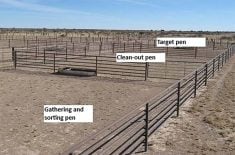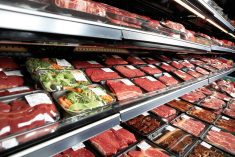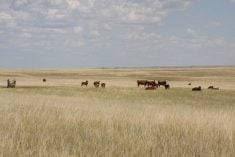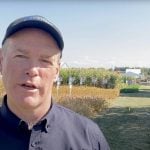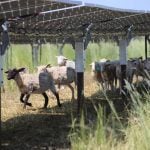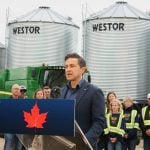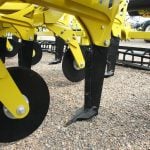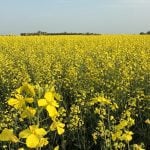REGINA – Bill Smalls has been a long-time Simmental breeder and member of the Canadian Agriculture Hall of Fame, but at Regina’s Canadian Western Agribition he is known for his pioneering work on the country’s largest indoor livestock show. On Nov. 23, Agribition awarded the producer from Craven, Sask., its builder’s award, now named the Chris Sutter Award, after the show’s first president.
Planning for the 35-year-old show began in 1968 with meetings of the Regina Exhibition Association’s summer livestock show board, of which Smalls was a member.
“Sutter had been to the January Denver Stock Show and thought we should have a winter show based on that model,” he said.
Read Also

Teamwork and well-designed handling systems part of safely working cattle
When moving cattle, the safety of handlers, their team and their animals all boils down to three things: the cattle, the handling system and the behaviour of the team.
First there was a debate over whether it would be located in Saskatoon or Regina. Then the organizers had to select a date.
“At first we looked at October,” Smalls said. “Some cattle producers liked it, but many as well as sheep and swine said many years harvest would be a problem. We liked November, but it had to be after the Royal Winter Fair in Toronto. The Royal was Canada’s big purebred beef show in those days.”
Sutter came up with the show’s themes.
“Chris had the vision: breed, livestock promotion, quality production and husbandry. He pushed the education elements of the show, all appealing issues to government and industry,” Smalls said.
“I was the guy in the barns and with experience at other shows across the country. I worked on how to run a show and I had experience on the Exhibition board.”
Smalls didn’t want to follow the route most agricultural shows had taken, where an exhibition association provided all the services and operated the barns and shows for the producers.
“Then all they have to do is show up and pay their fees. It isn’t their show anymore,” he said.
He pushed the concept of a show where purebred breeders would operate their barns and their events within the exhibition’s facilities. Agribition’s livestock component is still based on those principles.
Smalls said the new show managed to incorporate a previous Regina Mexabition equipment show into the first year’s Agribition.
And something happened at that first Agribition that folks said hadn’t happened before, but has become a part of the farm show culture since: farm equipment sales.
Lloyd Young, the Massey Harris dealer in Weyburn, Sask., sold a large piece of farm equipment at the show.
“Money changed hands at that show. Until then farmers had been reluctant to buy at equipment shows because they took place before the harvest was off,” Smalls said.
“That sale meant we began attracting a trade show that helped to build and economically support the beef cattle events. Agribition is all about beef cattle: a bottom up, producer run show and that is why it has lasted and grown. But the November timing helped a bit.”


